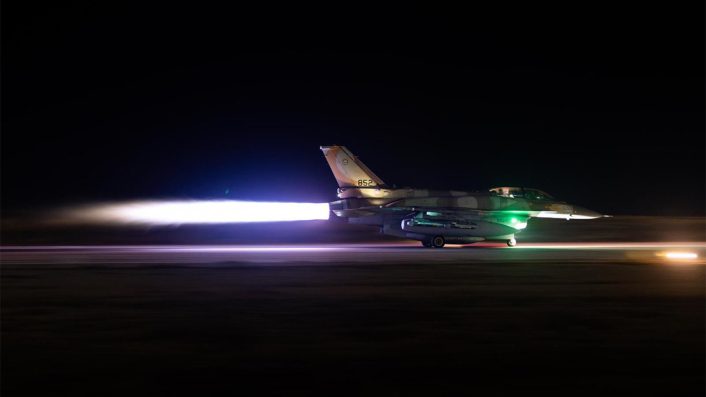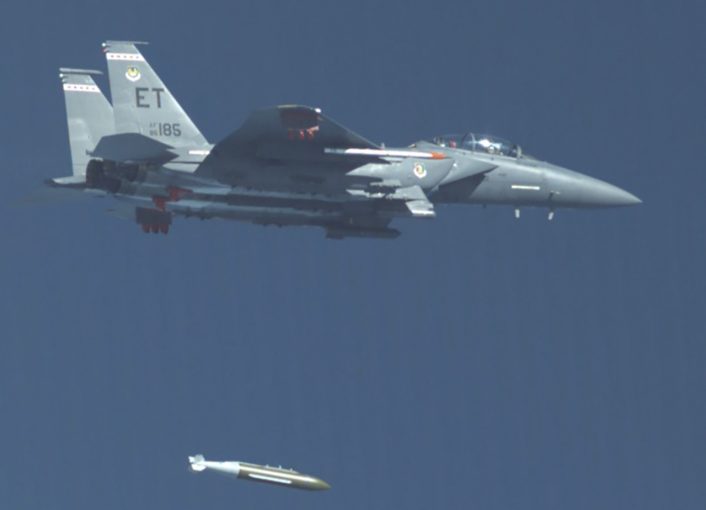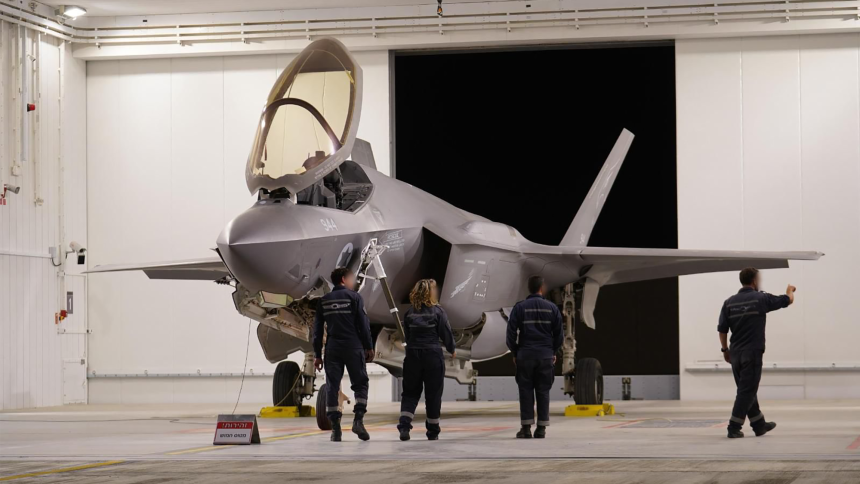Unverified claims have circulated stating Israel was able to take advantage of long-rumored modifications to its F-35 fleet in order to strike Iran without tanker support.
Much speculation has arisen from Israel’s Jun. 13 and subsequent strikes on Iran about how the country, which possesses only seven Boeing 707 refueling tankers, managed to sustain such large amounts of fighter aircraft on long-range raids deep into Iranian territory.
Based on video reportedly taken from countries between Israel and Iran, it is apparent that aerial refueling from the 707s was required and used for at least some of the Israeli Defense Forces’ aircraft, but the capacity of such a small fleet would be fairly limited.
IDF F-16 refueling over Deir ez-Zur, Syria. A lot has changed in months after Oct. 7, 2023, and most of it to the determent of Hamas, Hezbollah, Iran, Syria and Russia.#OSINT pic.twitter.com/21GboyV3PR
— OSINT Intuit 🇺🇸 🇨🇦 🇬🇧 🇺🇦 🇮🇱 🇬🇪 (@UKikaski) June 13, 2025
Some commentators have claimed that U.S. Air Force refueling support must have been provided, but this is very much unconfirmed – President Trump has in fact flatly denied that the U.S. was involved at all. Other speculation, based on the appearance of Royal Air Force Voyager aircraft active over Syria (on Operation Shader) can be immediately discounted – these aircraft are equipped for hose-and-drogue refueling only, and cannot refuel Israel’s boom-refueled fighter force.
One way to alleviate the pressure on Israel’s small tanker fleet would be if some of the aircraft taking part in the strikes did not require their assistance, and according to anonymous U.S. officials who have reportedly spoken to outlet Middle East Eye, this is exactly how things played out. We have reported previously on Israel’s desire to implement modifications on their already unique F-35I ‘Adir’ fighters, Israel-specific variants of the F-35A Lightning II, which includes extended range capabilities through additional fuel tanks.
200 מטוסי קרב, מעל 330 חימושים שונים:
תיעודים מפעילות חיל-האוויר במבצע “עם כלביא” pic.twitter.com/e9D556OGQh
— Israeli Air Force (@IAFsite) June 13, 2025
All developments of such capabilities have remained very secretive, although in 2022 the Israeli Air Force made claims that its F-35 fleet was now capable of reaching Iran without refueling. It made no clarifying statements at the time about how exactly they had achieved this.
In our previous reporting, we referenced that initial design studies had been completed by Israel Aerospace Industries (IAI) and a subsidiary of Elbit Systems on both external 600 gallon drop tanks as well as conformal fuel tanks (CFTs). Theoretically, the latter would be most beneficial in reducing any detrimental impact on the F-35’s radar cross-section – it would also free up hardpoints for weapons, which is a major factor in why CFTs are utilised by many F-16 operators, including Israel. That being said, however, in full stealth mode it is unlikely any external weapons would be carried by the F-35s. Due to the need for pylons, drop tanks can introduce a large increase in radar cross-section, but many studies have investigated designs for low RCS pylon and fuel tank designs for precisely this reason.
Adding extra fuel to the F-35 would provide an enormous capability boost – the F-35A already has a combat radius well in excess of many other fighters, and with zero-drag internal weapons it can attain this performance with a significant payload. It would fit well with Israel’s aforementioned F-16s, the F-16I variant of which utilises CFTs, as well as the F-15I Ra’am which also uses CFTs.

The remaining question is in which roles each of these aircraft types were employed. We know that there are novel, largely unpublicised weapons capabilities that have been integrated on these types in Israeli service – including air-launched ballistic missiles and a one ton bomb that fits in the F-35’s internal weapons bays. However, the deeply hardened Iranian nuclear facilities require a significant ground penetration capability, which as far as we know is supplied in the Israeli Air Force by U.S. built GBU-28 and GBU-72 bombs. These bunker busters are physically large bombs, weighing up to 5,000 lbs each, and are usually reserved for use by F-15s (not counting larger strategic bombers which are not in Israel’s inventory).
Unless there is some unknown large bunker buster capability integrated onto Israel’s F-35s, it is logical to assume that F-35s would have operated in a suppression or destruction of enemy air defenses (SEAD/DEAD) role in concert with F-15Is which could deliver the primary payload against hardened sites. While the F-15s may still have required refueling, having fewer aircraft dependent on the tankers would allow more fuel to be shared among remaining aircraft and increase the tankers’ range and on-station time.

Iran’s Hardened Facilities
Iran, well aware of the bunker busters in service with Israel and the United States, has spent many years building its facilities deep underground to shield them as much as possible from attack. These are likely to varying degrees – some able to be penetrated by GBU-28/GBU-72 type weapons, but offering protection from more standard bombs, like those based on the Mark 80 series, through to megastructures that even the brand new GBU-72 might struggle to reach.
“Israel lacks the bunker buster bombs and large bomber aircraft needed to destroy Fordow.
The U.S. has both within flying distance of Iran, but Trump has so far distanced from the operation and argued that it would be illegitimate for Iran to retaliate by striking U.S. targets.” https://t.co/LhT3cqlDs2
— Jake Wilkins (@JakeWilkns) June 14, 2025
For these facilities, the U.S. specifically fields the GBU-57 Massive Ordnance Penetrator (MOP) exclusively from B-2 Spirit stealth bombers. This 30,000 lb weapon has been in operational service since the early 2010s. The exact number in service is not known, but the stockpile is thought to be relatively small. These bombs would be one of the most valuable capabilities offered by the U.S., who Israel wants to join their operation against Iran.
Eventually, the MOP is due to be replaced by the Next Generation Penetrator munition. The U.S. desires this new bunker buster to be smaller and compatible with a greater range of aircraft, but squeezing such penetrating capability into a smaller object may prove difficult. One possible solution is the use of rocket or other propulsion to replace sheer size and weight with great speed in order to achieve similar penetration effects.
Propelled bunker busters may be one way Israel secretly has gained an edge in this field, using special warheads on the formerly top secret long range missiles that we have seen employed on an increasingly frequent basis over the last few years.









